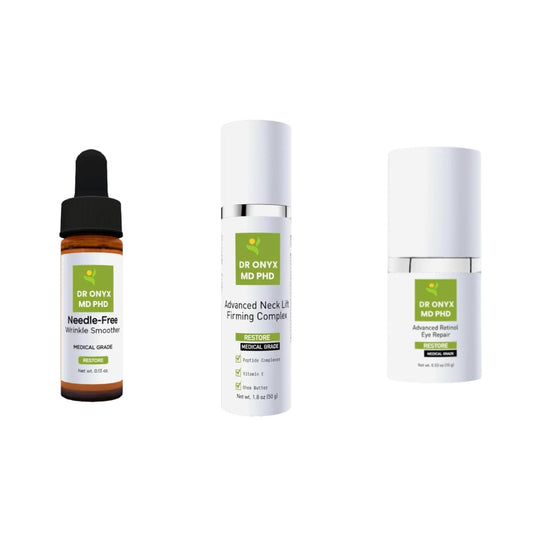10 Proven Strategies to Enhance Ozempic's Effectiveness
Ozempic (semaglutide) has revolutionized weight management and diabetes treatment, offering hope to millions struggling with these conditions. While this GLP-1 receptor agonist delivers impressive results on its own, certain strategies can maximize its benefits while minimizing side effects. Whether you've recently started Ozempic or have been using it for some time, these evidence-based approaches can help you achieve optimal outcomes from your treatment plan.
Optimize Your Nutrition Plan
Ozempic works partly by slowing gastric emptying and reducing appetite, but pairing it with thoughtful nutrition choices amplifies these effects. The medication creates a window of opportunity to establish healthier eating patterns that can lead to sustainable results.
Focus on Protein-Rich Foods
Prioritizing protein intake while on Ozempic serves multiple purposes. High-quality protein sources like lean meats, fish, eggs, and plant-based options help preserve muscle mass during weight loss, which is crucial for maintaining metabolic health. Aim for 1.2-1.6 grams of protein per kilogram of body weight daily, spreading your intake throughout the day.
Protein also increases satiety hormones and requires more energy to digest than carbohydrates or fats, creating a natural calorie deficit. Many Ozempic users report that protein-rich meals help them feel satisfied with smaller portions, making dietary adherence significantly easier.
When selecting protein sources, consider incorporating a variety of options to ensure you receive a complete amino acid profile. Fish like salmon and mackerel offer the added benefit of omega-3 fatty acids, which have anti-inflammatory properties that may complement Ozempic's metabolic benefits. Plant-based proteins such as lentils, chickpeas, and tofu can be particularly beneficial as they provide fiber alongside protein, further enhancing the feeling of fullness that Ozempic promotes.
Time Your Meals Strategically
Since Ozempic slows digestion, some users experience better tolerance and enhanced effectiveness with specific meal timing approaches. Consider eating your largest meal earlier in the day when digestive enzymes are naturally more abundant. Many patients find that smaller, more frequent meals help manage the medication's effects on gastric emptying while maintaining stable blood sugar levels throughout the day.
Some healthcare providers recommend allowing 3-4 hours between meals rather than continuous snacking, giving your digestive system adequate time to process each meal fully. This approach can reduce gastrointestinal discomfort while maximizing Ozempic's appetite-suppressing effects.
Implementing a consistent eating schedule can also help regulate your body's hunger cues and circadian rhythms. Some Ozempic users find that finishing their last meal 2-3 hours before bedtime improves sleep quality and morning glucose levels. This practice, sometimes called "time-restricted eating," may enhance Ozempic's effectiveness by aligning with your body's natural metabolic patterns and allowing for proper overnight fasting periods that promote cellular repair and metabolic reset.
Hydrate Adequately
Proper hydration is crucial when taking Ozempic. The medication can occasionally cause mild dehydration, and staying well-hydrated helps mitigate this effect while supporting overall metabolic function. Aim for at least 2-3 liters of water daily, adjusting based on your activity level and climate.
Some patients find that drinking a full glass of water before meals enhances satiety signals, making portion control more manageable. Hydration also supports the body's natural detoxification processes and can help reduce constipation, which is occasionally reported by Ozempic users.
Beyond plain water, consider incorporating hydrating foods into your diet as well. Cucumbers, celery, watermelon, and strawberries have high water content and provide essential vitamins and minerals with minimal calories. Herbal teas can also contribute to your daily fluid intake while offering additional benefits—peppermint tea may help with digestion, while ginger tea can soothe nausea that some experience when first starting Ozempic. For those who struggle to drink enough water, infusing water with slices of citrus fruits or berries can make hydration more appealing without adding significant calories or affecting blood sugar levels.
Incorporate Strategic Physical Activity
Exercise complements Ozempic therapy by enhancing insulin sensitivity, preserving lean muscle mass, and accelerating fat loss. The key is finding sustainable activities that work with your energy levels, which may fluctuate during treatment.
Combine Resistance and Cardiovascular Training
A balanced exercise program that includes both strength training and cardiovascular activity provides optimal results for Ozempic users. Resistance training 2-3 times weekly helps maintain muscle mass during weight loss, which is essential for long-term metabolic health. Focus on compound movements like squats, deadlifts, and push-ups that engage multiple muscle groups simultaneously.
For cardiovascular exercise, moderate-intensity activities like brisk walking, swimming, or cycling for 150 minutes weekly can significantly enhance Ozempic's effects on glucose metabolism. Many patients find that breaking this into shorter, more frequent sessions improves adherence and reduces fatigue.
Time Exercise Strategically
Some research suggests that exercising within a few hours after your Ozempic injection may enhance its glucose-lowering effects. However, individual responses vary, so monitor how your body reacts and adjust accordingly. Morning exercise may be particularly beneficial for establishing a consistent routine and potentially reducing any nausea that sometimes occurs with Ozempic.
Listen to your body during the adjustment period. You might need to temporarily reduce exercise intensity when starting Ozempic or after dose increases, gradually building back up as your body adapts to the medication.
Manage Side Effects Proactively
Gastrointestinal side effects are common with Ozempic, especially during the initial weeks of treatment or after dose increases. Proactively addressing these issues can improve medication adherence and quality of life.
Implement Anti-Nausea Strategies
Nausea is among the most frequently reported side effects of Ozempic. Simple interventions can significantly reduce its impact. Ginger tea, small frequent meals, and avoiding lying down after eating can all help manage nausea. Some patients find that taking Ozempic before bedtime minimizes daytime nausea, though this should be discussed with your healthcare provider.
Staying well-hydrated and avoiding trigger foods that exacerbate nausea (often fatty, spicy, or highly processed items) can make a substantial difference in your comfort level. Remember that nausea typically improves as your body adjusts to the medication, usually within 4-8 weeks.
Address Constipation Early
The slowed gastric motility that helps Ozempic reduce appetite can sometimes lead to constipation. Increasing fiber intake gradually through vegetables, fruits, and whole grains helps maintain regularity. Aim for 25-30 grams of fiber daily, but introduce it slowly to avoid bloating. Magnesium supplements or over-the-counter stool softeners may be helpful for some patients, though these should be discussed with your healthcare provider.
Physical activity, particularly walking, can stimulate bowel function and help manage constipation. Even short 10-15 minute walks after meals can make a significant difference in digestive comfort.
Optimize Medication Timing and Administration
How and when you take Ozempic can influence both its effectiveness and tolerability. Small adjustments to your administration routine may yield significant benefits.
Consistent Weekly Schedule
Administering Ozempic on the same day each week helps maintain stable blood levels of the medication, optimizing its effectiveness. Set a recurring reminder on your phone or calendar to ensure consistency. If you need to change your injection day, ensure the new date is at least 48 hours after your last dose to maintain appropriate medication levels.
Some patients find that certain days work better than others based on their schedule and activities. For instance, if weekends involve more social dining, taking Ozempic mid-week might provide maximum appetite suppression during these challenging times.
Proper Injection Technique
While seemingly simple, proper injection technique ensures optimal absorption of Ozempic. Rotate injection sites between your abdomen, thigh, or upper arm to prevent lipohypertrophy (fatty lumps under the skin) that can affect medication absorption. Clean the injection site with alcohol and allow it to dry completely before injecting.
Store Ozempic pens properly—refrigerated before first use and then at room temperature for up to 56 days after opening. Never freeze the medication or expose it to direct sunlight, as this can degrade the active ingredient and reduce effectiveness.
Monitor Progress Beyond the Scale
While weight loss is often a primary goal with Ozempic, focusing exclusively on the scale can be counterproductive. A more comprehensive approach to tracking progress provides better insights and motivation.
Track Multiple Health Markers
Beyond weight, monitor improvements in blood glucose levels, blood pressure, cholesterol profiles, and inflammatory markers when possible. These clinical indicators often improve before significant weight loss occurs and provide valuable feedback about your metabolic health. Many patients experience meaningful health benefits from Ozempic even when weight loss plateaus temporarily.
Consider tracking energy levels, sleep quality, and mood as well. Improvements in these areas frequently accompany successful Ozempic therapy and contribute significantly to overall quality of life. A simple journal noting these subjective measures can reveal patterns and progress that might otherwise go unnoticed.
Document Non-Scale Victories
Take regular measurements of your waist, hips, chest, and other areas to track body composition changes. Often, inches are lost even during periods when the scale doesn't move much. Photos taken at regular intervals can also provide visual evidence of progress that daily scale fluctuations might obscure.
Pay attention to functional improvements like walking farther without fatigue, reduced joint pain, improved sleep quality, or fitting into clothes more comfortably. These real-life benefits often prove more motivating than numbers alone and reflect meaningful health improvements.
Work Closely With Your Healthcare Team
Ozempic therapy works best as part of a comprehensive treatment approach. Regular communication with healthcare providers ensures your treatment plan evolves with your changing needs.
Schedule Regular Follow-ups
Consistent monitoring allows for timely adjustments to your Ozempic dosage and overall treatment plan. Most providers recommend monthly check-ins during the initial phase, then quarterly once stabilized. These appointments provide opportunities to address concerns, celebrate progress, and make evidence-based adjustments to your regimen.
Come prepared to these appointments with specific questions and detailed information about your experience. Tracking your symptoms, side effects, weight changes, and blood glucose readings in a dedicated journal or app helps provide your healthcare team with valuable insights for optimizing your treatment.
Remember that Ozempic represents a powerful tool in your health journey, but its effectiveness is maximized when combined with these supportive strategies. By implementing these approaches systematically, you can enhance both the short-term results and long-term sustainability of your treatment. As with any medication, individual responses vary, so work closely with your healthcare provider to personalize these strategies to your specific needs and medical situation.

















